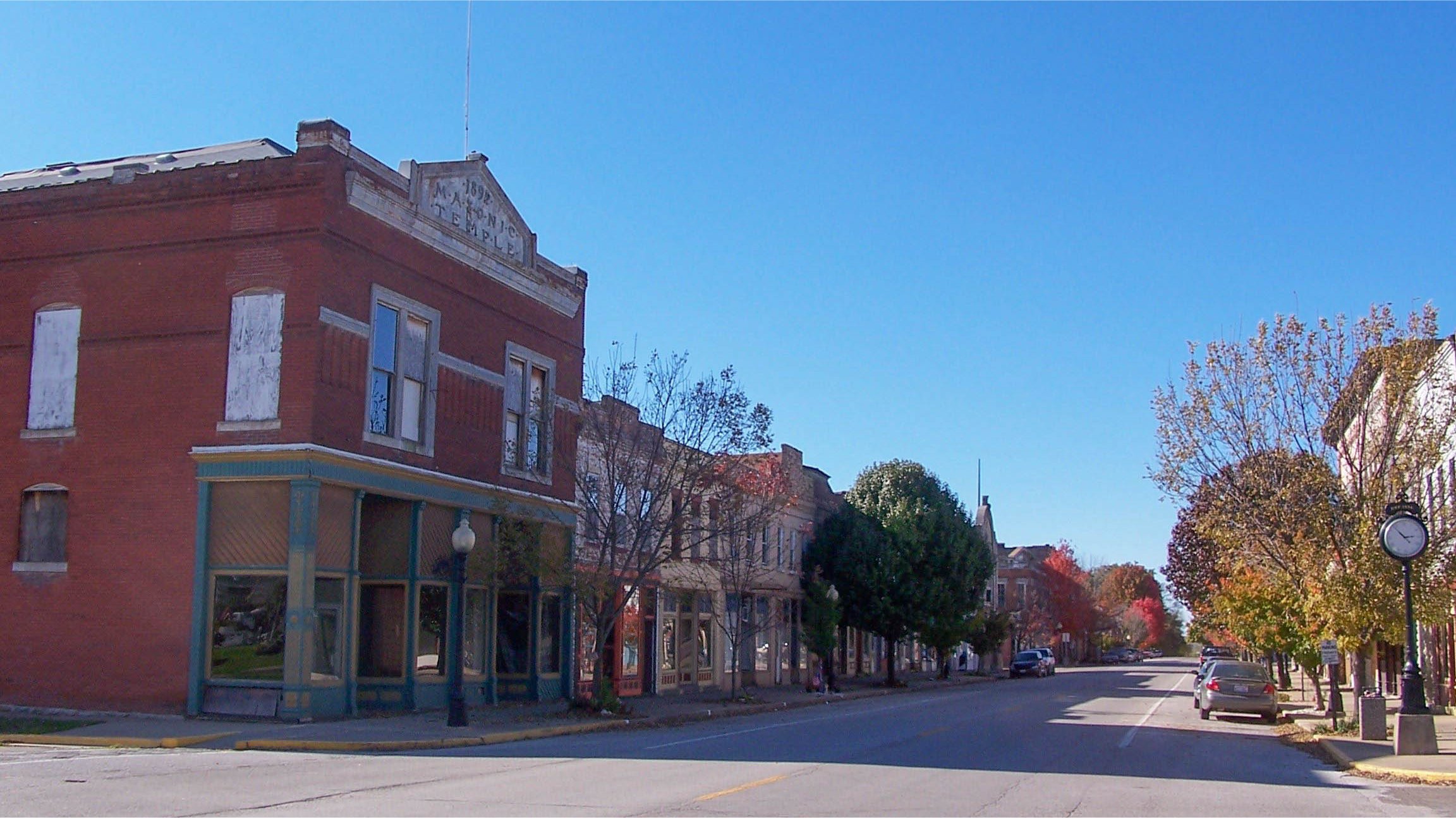Visitors Guide to Griggsville
Pike County, Illinois
"Purple Martin Capitol of the Nation"
Griggsville was laid out in 1833 by Joshua Stanford, Nathan W. Jones, and Richard Griggs and named for Richard Griggs. The original town consisted of eight blocks on the north side and eight on the south side of Quincy Street. The original plan made provision for a public square containing two acres but the town was replatted and eight lots from four adjacent blocks were designated for public purposes. Griggsville sprang up as a boom town when the floodgates of migration opened after the Indian Removal Act of 1830 and successful conclusion of the Black Hawk War in the 1832. As a frontier boom town, Griggsville was a rival of Chicago, then a small settlement on the shore of Lake Michigan. The first industries in Griggsville were pork packing and flour milling and these products were transported to Griggsville Landing, once a busy river port four miles to the east, for shipment to the rest of the nation.
The town was actively interested in the Civil War and in 1838 an abolition melee occurred after a Democratic and Whig contest in the election for constable. Following the election an anti-slavery meeting was held and a petition was signed asking Congress to abolish slavery in the District of Columbia and not to admit Texas as a slave state to the Union. A mob of pro-slavery advocates got a hold of the petition and began threatening the signers of the petition with violence if they didn’t erase their names. The anti-slavery men formed a committee and informed the pro-slavery mob that they must disband or they would be dealt with harshly with a “fresh supply of ammunition.” The community's active concern over the slavery question resulted in there being more enlistments in the Union army recorded in Griggsville than from any other point in Pike County.
As Griggsville lies between the Illinois and Mississippi Rivers it has muggy summer weather and conditions ideal for mosquitoes. Concerned with the growing the use of pesticides local entrepreneur and nature enthusiast J.L. Wade, a Griggsville resident and owner of a local antenna manufacturing factory, came up with an alternate method to control the pests. Wade realized that Griggsville was right in the migration path of the Purple Martin which supposedly is able to eat 2,000 mosquitoes in a single day. Wade reasoned that if the town provided the birds with shelter they would make Griggsville their summer home and so he converted his antenna factory into a bird house building factory. Over the years Griggsville has installed over 5,000 birdhouses along the city streets, including a 562-apartment high rise that reaches a height of 70 feet. As the mosquito population dwindled the town adopted the nickname "The Purple Martin Capitol of the Nation", as well as labeling the Purple Martin "America's Most Wanted Bird."
Griggsville is home to the Western Illinois Fair which is held the third week of June each year. A major highlight of the fair is the bus demolition derby held on Saturday evening. The fair, which is one of the longest running fairs in Illinois, offers something for everyone. Some of the highlights are a petting zoo, fantastic midway rides, horse racing, motor cross, and a wide variety of concession stands. The town also has an annual Apple Festival in September that provides for a fun filled weekend. Local history can be found at the Skinner House. The Griggsville Preservation & Restoration Society restored the 1858 home in 1982 and it is open to visitors Tuesday & Wednesday morning and Thursday and Friday afternoon.











